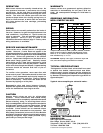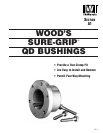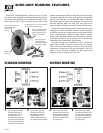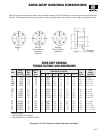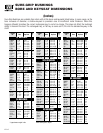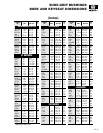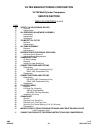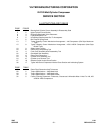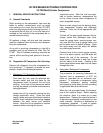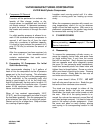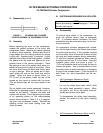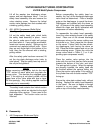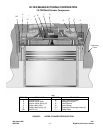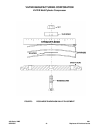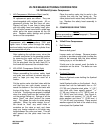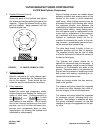
VILTER MANUFACTURING CORPORATION
VILTER MultiCylinder Compressor
400 Series VMC 2/01
SERVICE - 1 - Replaces all Previous Issues
I. GENERAL SERVICE INSTRUCTIONS
A. General Comments
When working on the compressor, care must be
taken to ensure contaminants, such as water
from melting ice or snow, dirt, and dust, DO NOT
enter the compressor while it is being serviced. It
is essential that all dust, oil or ice that has accu-
mulated on the outside of the compressor be re-
moved before servicing.
All gaskets, o-rings, roll pins and lock washers
must be replaced when servicing and reassem-
bling the compressor.
As an aid in servicing compressors, a tool kit is
available and can be ordered as Vilter Part No.
KT067. This kit includes necessary wrenches as
well as all the servicing tools pictured in this sec-
tion.
B. Preparation Of Compressor For Servicing
Remove all refrigerant from the compressor be-
fore servicing it. To properly evacuate the com-
pressor, employ the following procedure:
1. Refrigerant 717 (Ammonia) Compressor
Shut down the unit, open the electrical dis-
connect switch and pull the fuses for the
compressor motor to prevent the unit from
starting. Put a lock on the disconnect switch
and tag the switch to indicate maintenance is
being performed.
Isolate the unit by manually closing the dis-
charge stop/check valve. Close the liquid
supply valves and open all solenoid valves to
prevent liquid refrigerant from being trapped
between the stop valves and solenoid
valves. Allow the unit to equalize to suction
pressure before closing the suction
stop/check valve. After the unit has equal-
ized to suction pressure, depressurize the
unit by using a pump down compressor or
other acceptable means.
Remove drain plugs from the bearing hous-
ings, compressor housing and discharge
manifold. Drain the oil into appropriate con-
tainers.
To blow off the gas caught between the dis-
charge valves and discharge stop valve,
close the gauge valve, remove gauge, con-
nect one end of a hose to gauge valve, and
put the other end in a bucket of water. Open
the valve slowly and the water will absorb
any discharged ammonia.
Connect hose to the suction gauge connec-
tion in the same manner, and the water will
absorb the rest of the ammonia. Do not
leave hoses in the water if work has to stop
and the frame is still warm. Cooling of the
frame could siphon water back into the frame
through the hose.
2. Halocarbon Refrigerant Compressor
The procedure for removing halocarbon re-
frigerant from a compressor is NOT the
same as described for an ammonia com-
pressor. To evacuate a compressor using
halocarbon refrigerant, employ certified
technicians to pump down the unit according
to applicable laws and ordinances.
When the unit is pumped down, the tempera-
ture of the machine drops. Before opening
the machine, allow it to warm up to room
temperature. Opening the machine before it
is warmed up produces condensation on the
metal surfaces. Moisture is detrimental to
compressor operation. It leads to system
operating difficulties and rusting of parts.



